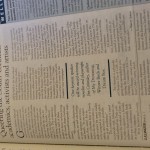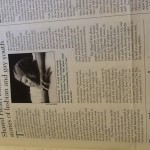Coming out takes a lot of courage and confidence. It can be rewarding, but also can lead to negative results. The pros of coming out are gaining self-confidence and becoming a part of a new community. But sometimes, gay individuals can feel isolated and more comfortable just hidden from society staying in the closet [1].
Unfortunately gay and lesbian people have been faced with much social bullying in America. As stated in the New York Times on May 20, 2011, a homosexual freshmen at Rutgers University committed suicide after his roommate had put up a video of a romantic interlude with him and another man [2]. This is extremely unacceptable and it is terrible that things like this are still happening in the world.
After this, the New York Times began a project entitled “Coming Out” so America could better understand this generation’s realities and expectations [2]. They contacted about 100 gay, lesbian, bisexual or transgender kids from all types of environments and spoke with them. It is interesting to see how gay individuals face different treatment in various parts of the country. There is even another project called the “The Trevor Project” which hopes to provide counseling to lesbian, gay, bisexual and transgender kids. I’m glad there are support groups for individuals that have to go through bullying like this. No one should have to go through this sort of trauma.
Even though instances such as these have been happening up till present day, efforts have been taken to prevent them since 1996. In the Emory Report on September 30, 1996, it was stated in an article titled “Shared Heart exhibit features stories of lesbian and gay youth” that “the shared heart exhibition’s creators hope that the stories of courage and victory told by the young people whose lives are documented in the text and photos will help create a sense of belonging for lesbian, gay and bisexual students and build understanding and acceptance with their peers, teachers, parents and communities”. This is reassuring that there are many efforts being taken in order to prevent this discrimination.
In addition, in the Emory Report on June 9, 1997, in an article titled “’Queering the South’ connects academics, activists and artists” states that there was a conference that will “bring together representatives from each of these groups to focus on how living in the South shapes lesbian/gay/bisexual/transgender experiences”. Again almost a year later after the Shared Heart exhibition, there are even more conferences addressing issues amongst these individuals.
People are definitely aware of the type of bullying that occurs among homosexual individuals, and many people actively take actions to prevent this bullying. In media especially, with shows like Glee where they show same sex kissing, these interactions are being shown as acceptable in society [2]. Even pop stars such as Lady Gaga sing songs indirectly accepting different people with her song entitled “Born This Way”. But there will always be people who are not ok with this type of interactions.
[1] Queering the South: Construction of Southern/Queer Identity by Donna Jo Smith
[2] http://www.nytimes.com/2011/05/23/us/23out.html?_r=0



We talked a little bit in the class about why LGBT’s are doing coming out in the first place. I can definitely see the good deed by the “Trevor Project” and New York Times’ “Coming Out”, but ironically, I think these two projects can also be seen as the proof of our society that many of us are not accepting LGBT’s as natural.. In the future when we become fully open to all kinds of sexualities, perhaps the word ‘coming out’ would become obsolete.
Chedda: I think you do a great job of weaving together scholarship we talked about in class, with your findings in the archives with contemporary popular journalism on the subject of “coming out.” All that is missing is images of the actual archival articles you found so that your reader can delve deeper if they want to. Make sure to include the images in your next post. Well done.
Sorry, I meant “Cheddar.” My fingers are too fast sometimes.